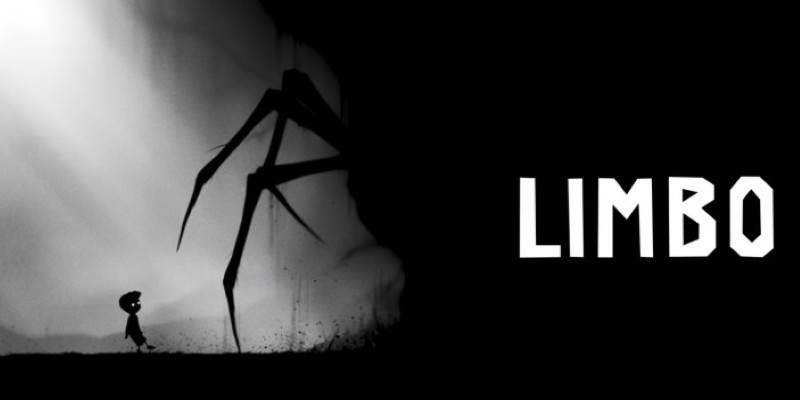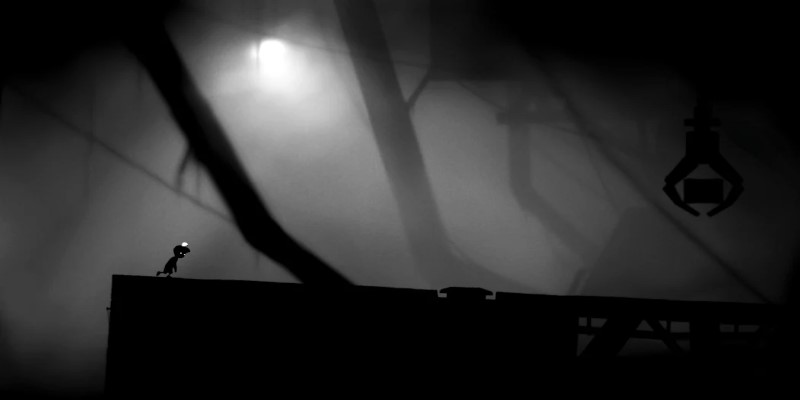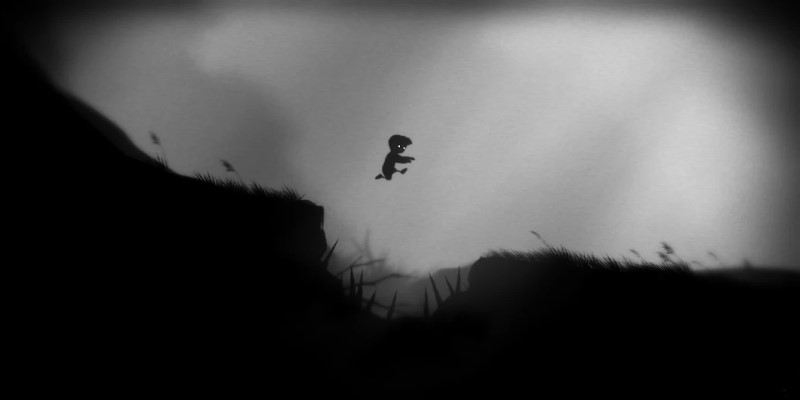
Geometry Dash

Fluvsise - A Fluff to Luv

Snake.io - Fun Snake .io Games

Pokémon Unite

Agent Hunt - Hitman Shooter

Gabbys Dollhouse: Games and Cats

Car Race 3D: Car Racing

Super Meat Boy Forever

Dark War Survival

Stumble Guys

LIMBO
ScreenShots




Editor Reviews
Dark, quiet, and more than a little unsettling—LIMBO isn’t your average side-scroller. There’s no tutorial, no hand-holding. You wake up as a nameless boy in a black-and-white forest and move. That's it. The world around you doesn't explain itself. You just start walking, figuring things out on your own. It's eerie, but that's the hook.

The game feels like it was made with silence in mind. There is no background music, just the crunch of footsteps, the swish of leaves, and the buzz of flies over dead things. The style is characterized by shadows and fog, with soft edges and harsh contrasts. It's not gore-heavy, but it doesn't pull punches. You'll get crushed by bear traps, impaled on spikes, and worse—without warning. Each time you die, you learn something. It never feels cheap.
Puzzles are the core of LIMBO. They start simple—pull a box, flip a switch. Later, you're dodging giant spiders or messing with gravity. The challenge grows without feeling forced. It's often about timing and noticing patterns. The developers don't flood you with obstacles—they give you just enough space to think, fail, and try again. It's frustrating at times, but in a way that motivates you to keep going.
There is no dialogue, text, or even a clear plot. Still, there's emotion here. Fear, curiosity, maybe hope. It's strange how much you start to care about this little silhouette of a boy with glowing eyes. There are no cutscenes or story drops, but something always feels out of reach, like you're chasing meaning through the mist.

Controls are minimal: move, jump, grab. That's all you get. The simplicity works. It keeps you focused. LIMBO isn't trying to be fast or flashy. It invites you to slow down and immerse yourself in the atmosphere. Every puzzle solved feels like a small relief. Every death is a small lesson.
Playdead’s attention to detail is sharp. A hanging rope sways just slightly. Water ripples when you step in. You can almost feel the world's weight pressing in from the sides. LIMBO's atmosphere isn't a backdrop—it's the main event.
How to Play?
Step 1: Open LIMBO and begin a new game. The game drops you into a grayscale world without instructions. Move using the left and right arrows or your analog stick. There’s no hand-holding—just start walking.
Step 2: Use the jump button to navigate over small gaps or obstacles. Timing matters, especially later. The jump is shallow, so get used to short, precise movements.

Step 3: Pay attention to the environment. The game doesn’t use words or symbols. Spikes, bear traps, and ropes blend into the scenery. Watch for visual clues.
Step 4: Pull and push objects to create paths. If there’s a box or cart, chances are you’ll need it to reach higher ledges or block hazards.
Step 5: Puzzles become increasingly challenging and require experimentation. Try different approaches. If something kills you, you'll respawn nearby. Trial and error is expected.
Step 6: The tone is quiet and eerie. Take your time, and observe how each piece of the world behaves. Some creatures will chase you or run away. Timing and movement are key to survival.

Step 7: You’ll eventually face brain-controlling worms, gravity puzzles, and timed jumps. There’s no HUD or hints. Just keep moving, testing, and learning.
Step 8: You'll know you're making progress when the scenery begins to change. LIMBO's story unfolds entirely through gameplay. Keep going until you reach the final moment.
Ratings
Disclaimer
2 . Gamekudo provide screenshots, historical version Apk, links and other information, which we collected fromGoogle Play. we will also add our own reviews to providechoose
3 . All trademarks,registered trademarks, product names and company names or logos appearing on the siteare the property of their respective owners.
4 . Gamekudo abides by the federal Digital Millennium copyright Act (DMCA) by responding to notices of alleged infringement that complies with the DMcA and other applicable laws.
5 . We guarantee the security of apk files downloaded from our site and also provide the official download linkat Google Play Store and App Store.
6 . lf you are the owner or copyright representative and want to delete your information, please contact [email protected]
7 . All the information on this website is strictly observed all the terms and conditions of Google Ads Advertisingpolicies and Google Unwanted Software policy.





















